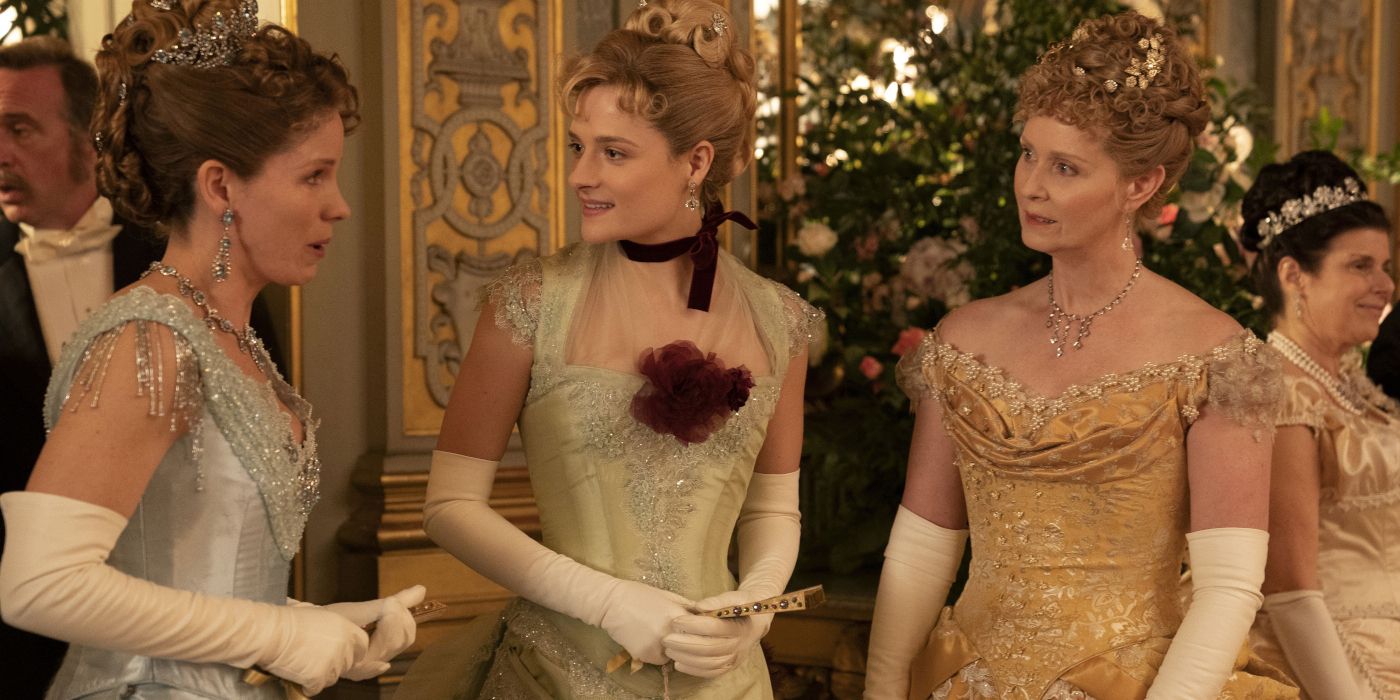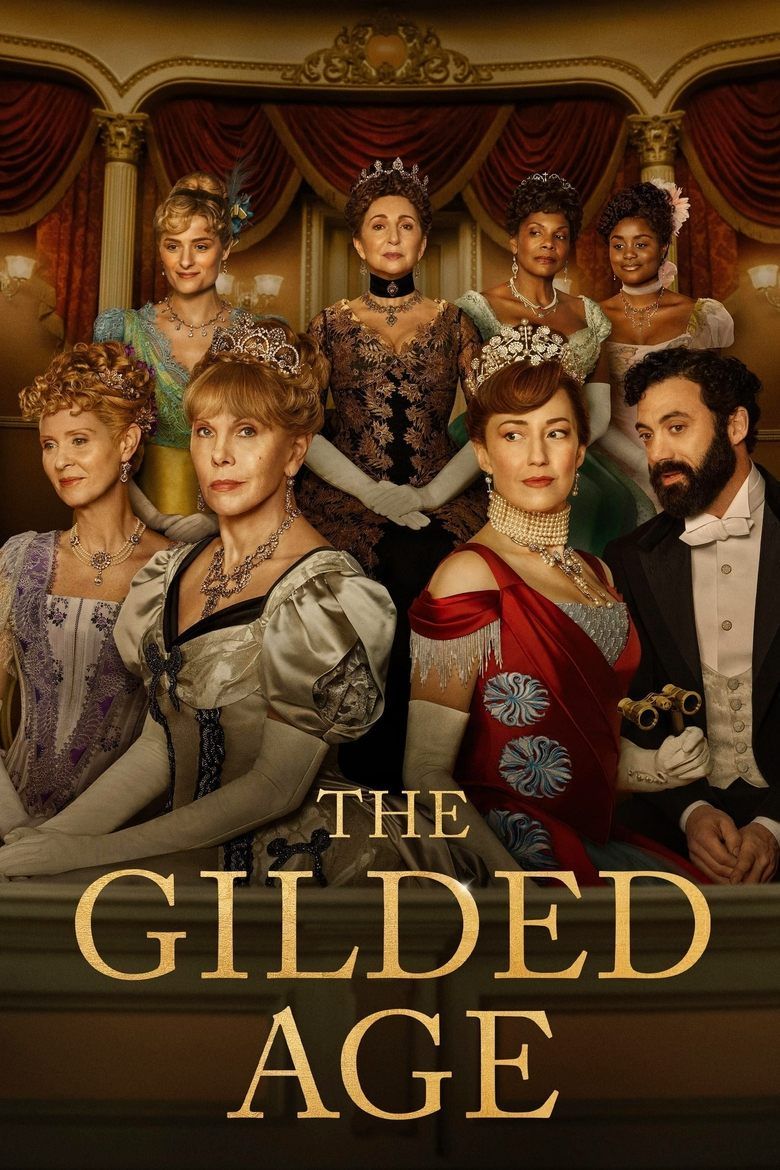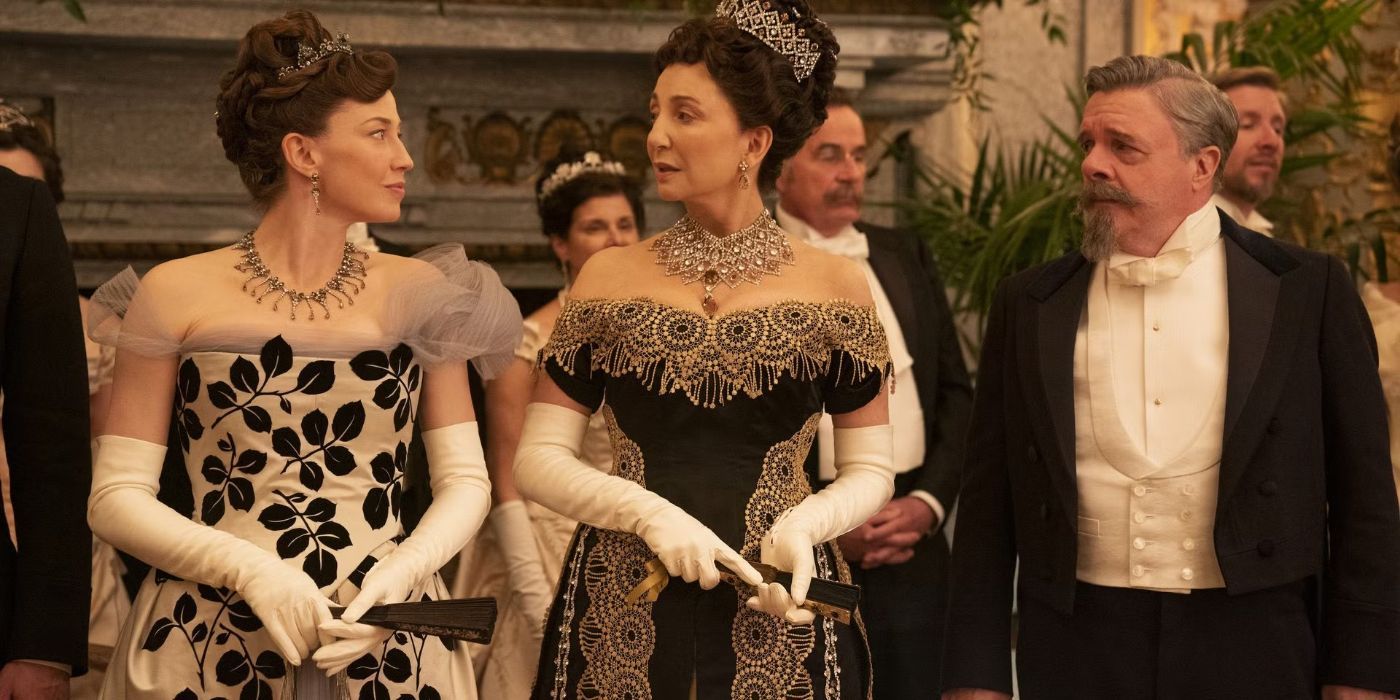The last decade has seen the resurgence of a certain kind of upstairs/downstairs prestige soap opera. First, Downton Abbey struck the fancy of PBS viewers from across the pond. Then Bridgerton climbed the ranks of the most streamed shows on Netflix. And now, HBO’s The Gilded Age is picking up steam in its third season. Julian Fellowes created both Downton Abbey and The Gilded Age, and they function as companion shows, with the latter acting as a semi-prequel to the former.
The Gilded Age follows an American new-money family trying to break into high society, and eventually the British aristocracy, at the end of the 19th century. Fans of the series may have noticed that, in addition to the impossibly extravagant production design, the show delves into topics that are still a part of the discourse more than 140 years later. In fact, The Gilded Age is such a parallel to the current socioeconomic climate… it might make one wonder if we haven’t failed to learn some important lessons.
‘The Gilded Age’ Is Bursting at the Seams with Pertinent History
There’s a lot of fact in The Gilded Age’s fiction. Characters like Mrs. Astor and Ward McAllister are close representations of famed personalities from late 1800s New York, and notable figures like Clara Barton, J.P. Morgan, John Singer Sargent, Emily Warren Roebling, and Oscar Wilde pop up in guest spots. It’s not just the proper names; storylines about reconstruction, suffrage, temperance, and spiritualism are also rooted in truth.
The character of Peggy Scott represents the hope and disappointment that Black Americans felt in the decades following emancipation, as well as the prejudices that existed within the Black community. Her pharmacist father and editor, Mr. T. Thomas Fortune (another real person), were formerly enslaved. Her new beau’s family is old money from within the Black elite, and Peggy bumps up against their classism and colorism. Though she faces discrimination in the north, she sees just how much more resistance there is to the idea of a vibrant Black society in the south when she travels to Tuskegee to interview Booker T. Washington.
Peggy also interviews Black suffragist Francis Watkins Harper and becomes involved with efforts to get women the vote. The Gilded Age depicts a range of opinions on the topic, from the indifference and/or opposition of traditional, affluent, married ladies to the passionate urgency of the young, the widowed, and the poor. Though it’s brief and over tea, the show also wades into the thorny alliance between Black men, who had won the vote, and the women who had supported them, but did not.

Related
HBO’s Posh Period Drama From ‘Downton Abbey’ Creator Continues a Glamorous Rotten Tomatoes Trend
We’re so happy this one is finally back!
The real Watkins Harper also spoke on behalf of temperance. The idea that alcohol was a personal health concern and a cause of domestic violence had gained traction, and united religious conservatives and feminists. In the third season, the mildly progressive Ada becomes devoted to the cause after the death of her clergyman husband. Ada gets caught up in the world of spiritualism, too, and employs a medium to help her communicate with Luke from beyond the grave. In the aftermath of the Civil War, women from across the social spectrum embraced the occult to process their grief, and because it was one of the few spheres in which they had freedom and influence.
About six generations removed, the silhouettes of our clothes may have changed dramatically, but the sociopolitical issues that define us have not. In response to America’s industrialized and for-profit food and healthcare systems, the unregulated new age and wellness movements are booming and are, again, aligning far-left women with far-right religious groups. Many of the same social media outlets that provide instructions for spirit work also extol the health benefits of sobriety. The emergence of trad-wife content has reignited debate about gender roles, with some adherents going so far as to argue against their own suffrage. The Supreme Court recently repealed part of the Voting Rights Act and effectively ended affirmative action, and quality of life can vary greatly for Black Americans depending on which state they happen to call home. But nowhere is The Gilded Age more relevant than in its depiction of the class war between laborers and robber barons.
Themes of Labor Versus Industry Are the Most Timely… and the Most Problematic
Though Marian Brook and her aunts are ostensibly the show’s focus, the real stars of The Gilded Age are the Russells. Here, too, Fellowes imitates life with his art. George Russell — a self-made railroad man — is a composite, but Bertha Russell and her daughter, Gladys, are stand-ins for Alva and Consuelo Vanderbilt. The Vanderbilts did have difficulty breaking into Mrs. Astor’s “four hundred.” They championed the establishment of the Met when they were turned away from the Academy. And Alva arranged Consuelo’s marriage to the Duke of Marlborough against her daughter’s wishes. Gladys is one of the show’s most sympathetic characters, and George and Bertha are the most charismatic presences on The Gilded Age. But just because Fellowes primes us to root for them doesn’t mean we should.
One could argue that suave capitalist George Russell is an antihero in the vein of Tony Soprano or Don Draper (though Fellowes goes comparatively easier on him). In Season 1, he cares more about bad PR than lives lost in the wake of a train derailment, but a Season 2 subplot based on the Great Railroad Strike of 1877 is more complicated and paints too rosy a picture. To Fellowes’s credit, he doesn’t vilify the workers fighting for better wages and eight-hour workdays. They just aren’t much more than extras; we get even less of their lived experience than we do that of the downstairs staff. And it’s George who, after mobilizing Pinkertons and troops against the strikers, prevents the clash from turning violent. In reality, many people died.

Related
Here’s What All the ‘Landman’ Oil Worker Slang Means
Discover the meaning of the oil industry terminology used in Paramount+’s Landman.
Broadly, The Gilded Age flatters its tycoons and aristocrats much more than it does its cooks and maids. Bertha, Agnes, Larry, and Marion contain multitudes and are often given palatable centrist-liberal attitudes, especially about race. Their servants are fairly one-dimensional and are shown to be more-or-less supportive of a status quo that doesn’t favor them. At a time when a significant percentage of the public is worried about the widening wealth gap, the corrupt influence of money in politics, and worsening labor conditions, it’s certainly a choice to make the Musks and Bezoses of their day the point-of-view characters.
Viewers of The Gilded Age should remember that its creator is himself an English baron, and the show’s title comes from an era so named because its gold-plated excesses hid volatile inequities underneath. It may be great fun for us plebes to escape into the lives of the Astors and the Russells. We just shouldn’t mistake them for the good guys, nor their world for good politics.

The Gilded Age
- Release Date
-
January 24, 2022
- Network
-
HBO Max
-

-

Morgan Spector
George Russell
Source link

![Tyreek Hill offers Mike McDaniel solution to Dolphins’ short-yardage struggles: ‘Take De’Von [Achane] out’ Tyreek Hill offers Mike McDaniel solution to Dolphins’ short-yardage struggles: ‘Take De’Von [Achane] out’](https://i2.wp.com/sportshub.cbsistatic.com/i/r/2025/08/01/e0895eb1-2f9d-4ea8-895a-680173b98d48/thumbnail/1200x675/f3fac8932a2513dbb899c2896261ffbf/tyreek-achane.jpg?w=150&resize=150,150&ssl=1)
















Add Comment